
Climate-proof Mediterranean garden in the Hortus opened by André Kuipers
On 22 May, astronaut André Kuipers opened the new Mediterranean garden in the Hortus. With this water-efficient garden, the Hortus aims to offer inspiration for future- and climate-proof garden planting. Prefect Paul Keßler and scientific director of the Leiden Observatory Ignas Snellen also signed a Memorandum of Cooperation.
The Hortus is happy with this addition to the botanical garden. In the words of Prefect Paul Keßler: ‘We are proud of to be the first in the Netherlands Association of Botanical Gardens to have a garden area specifically dedicated to the Mediterranean Sea region.’
Professor Jan Willem Erisman, professor of Environmental Sustainability, also explained how biodiversity is the basis for resilience against external factors. Tim Claerhout, PhD candidate at the Hortus, talked about his research on lichen mosses and what they tell us about the heat island effect in urban areas.
The ceremonial fig
The attendees then moved to the Mediterranean garden, where André Kuipers performed the opening ceremony by planting a fig (Ficus carica). He said that during his space travels, he especially missed nature on Earth. 'For me, biodiversity, space travel and the universe have always been connected. I probably have 30 per cent DNA in common with this fig. We are all made of stardust.'
Olive trees, lavender and sunflowers
Rogier van Vugt, head of horticulture, explained how the Mediterranean garden is laid out. A number of centuries-old olive trees, recognisable by their knotty trunks, and the as yet small cypress trees define its appearance. Herbs such as rosemary and lavender also infuse the garden with the fragrance of the Mediterranean. The dry stone walls along the semi-paved winding path complete the picture.
The Mediterranean region is known for its wet winters and dry summers, a climate that is becoming increasingly common in the Netherlands. Plants from this area can cope well with this. The aim of the Hortus is eventually not to have to water the Mediterranean garden at all.
The garden contains a scientific collection of sunflowers (Cistus and related genera such as Helianthemum and Halimium). The Hortus aims to collect as many species of sunflowers as possible that occur naturally in the wild. These shrubs produce new flowers every day in the dry Mediterranean summers. 'It’s a haven for insects because there is so much to eat,' says Van Vugt.
-
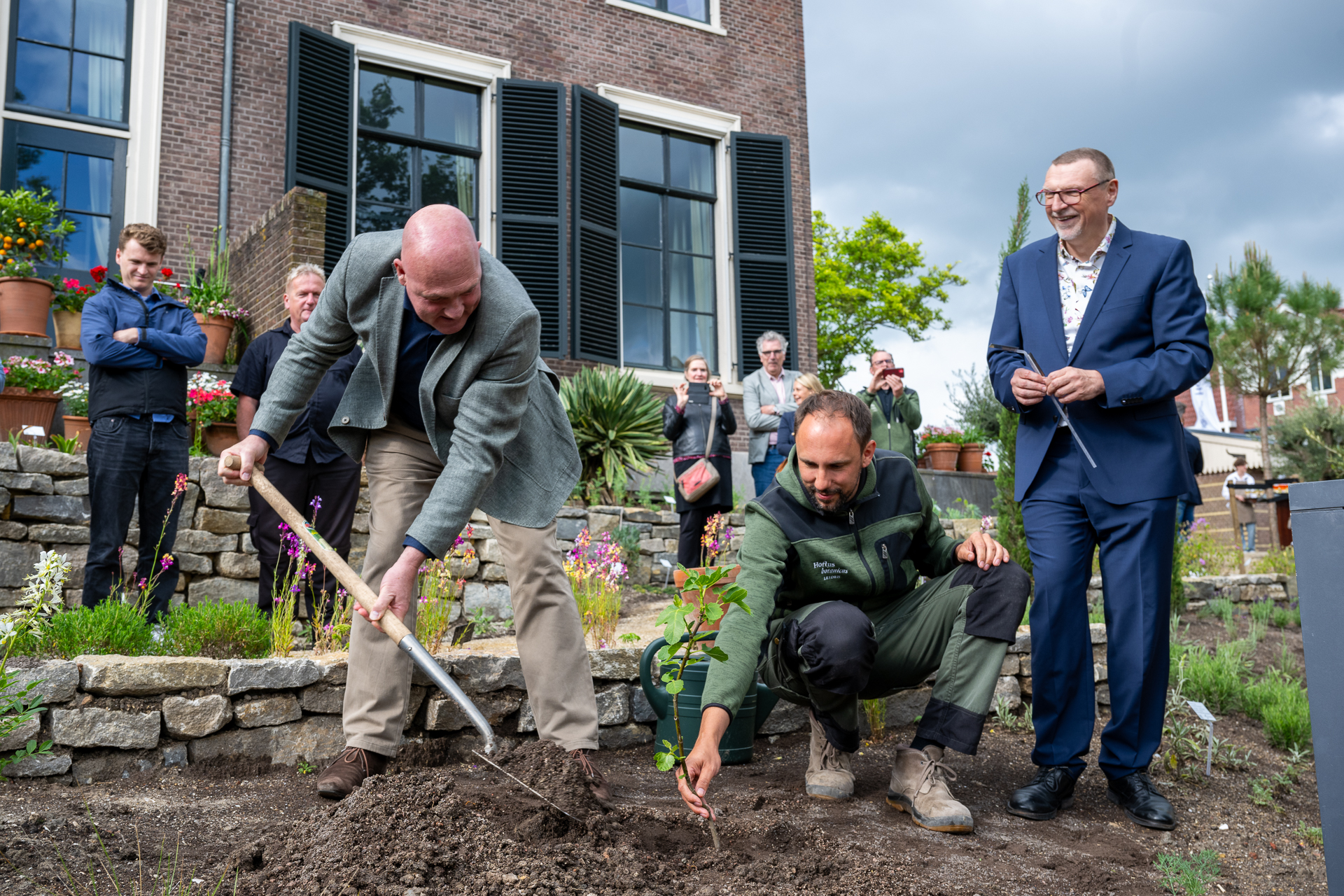
From l to r: André Kuipers, Rogier van Vugt and Paul Keßler -
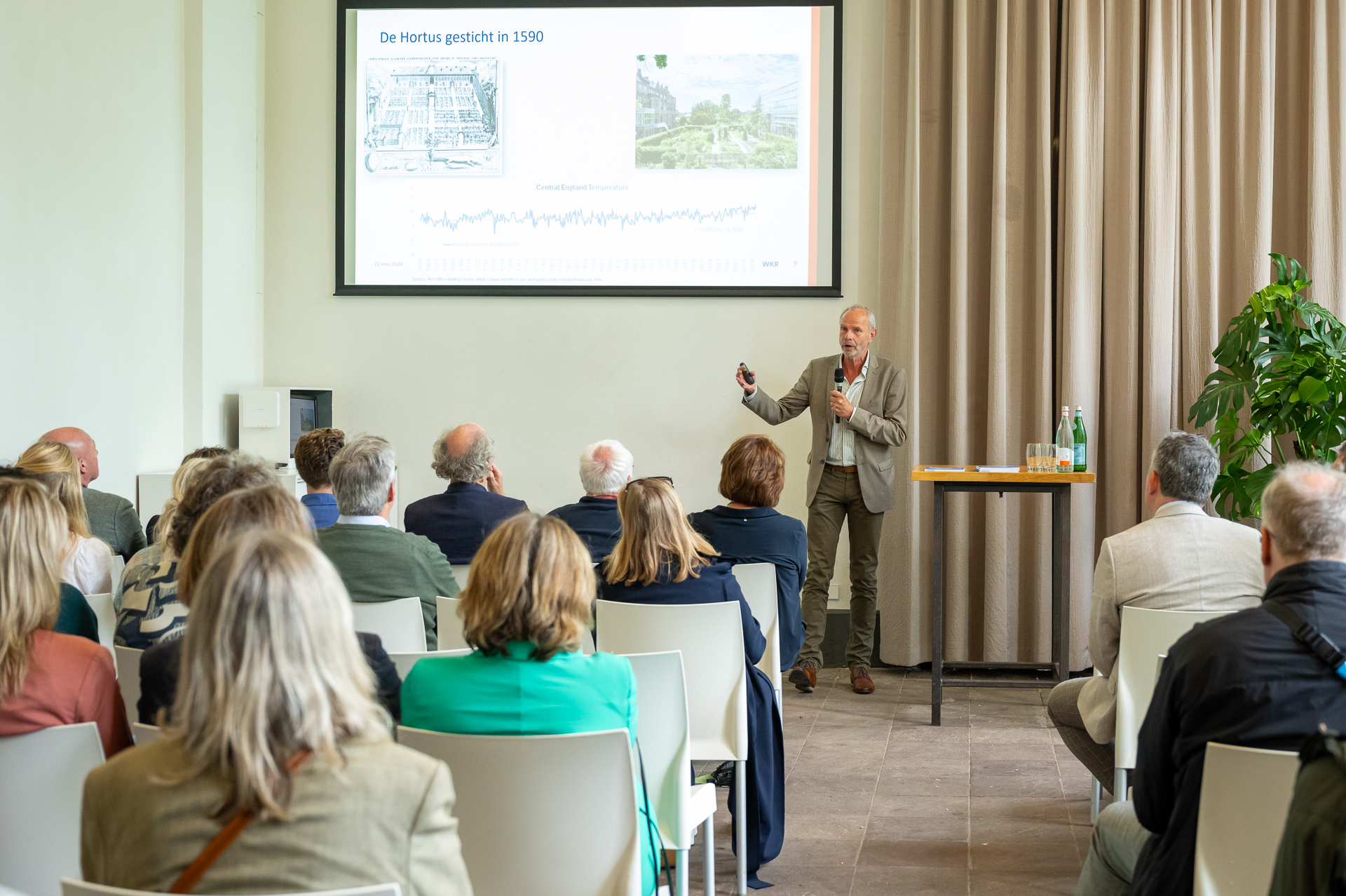
Professor Jan Willem Erisman -
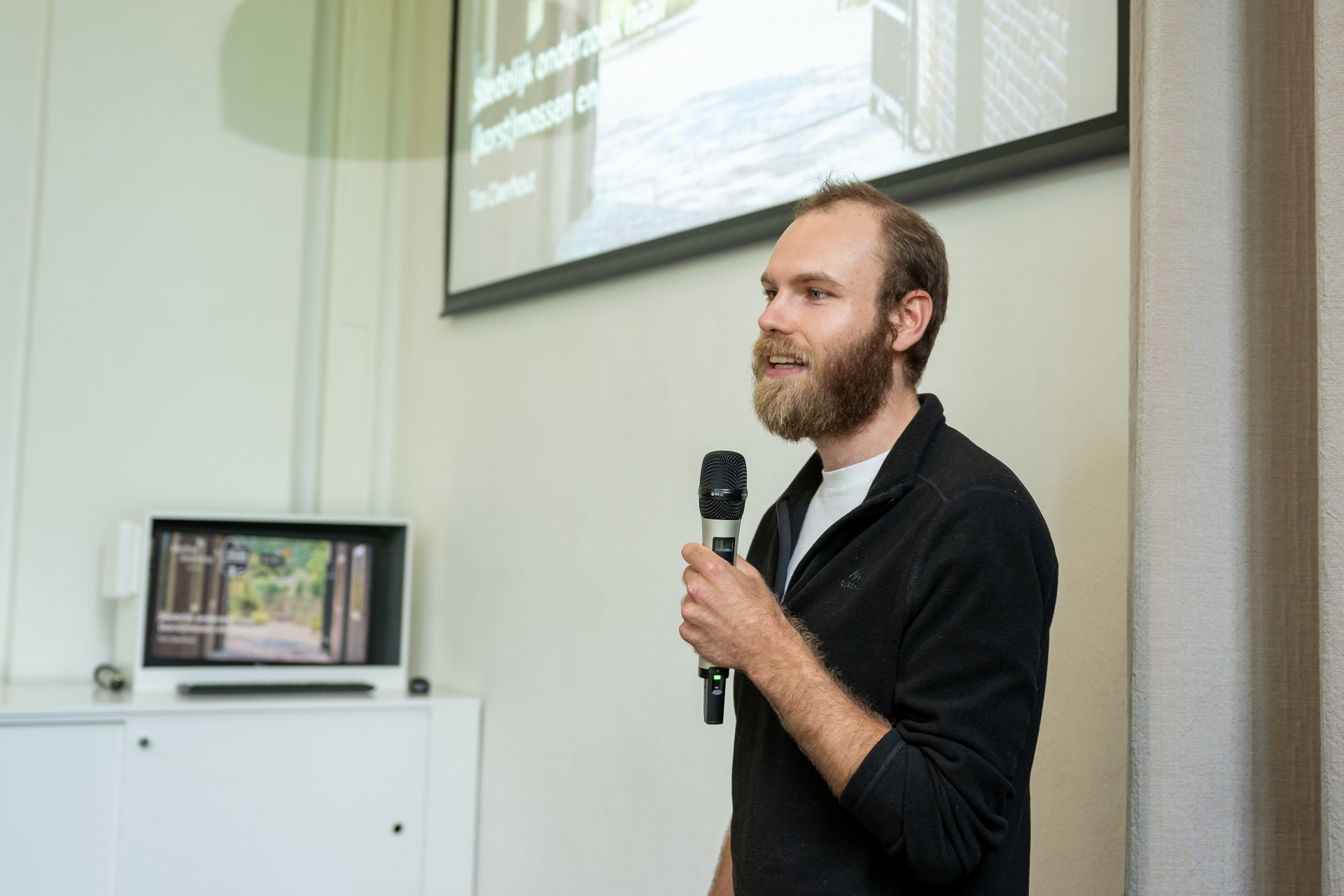
Promovendus Tim Claerhout -
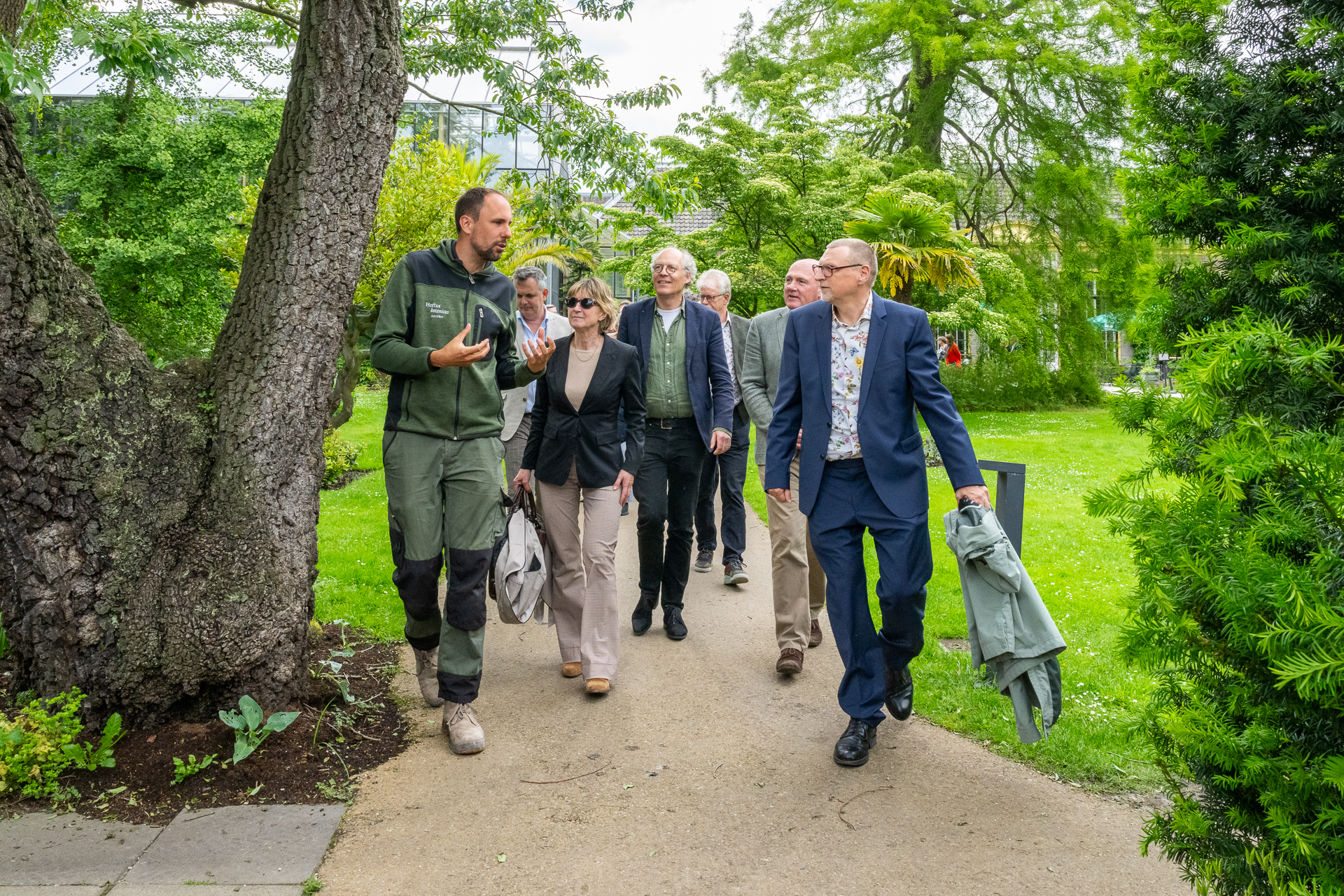
From l to r: Rogier van Vugt, Annetje Ottow, Jasper Knoester, André Kuipers and Paul Keßler -
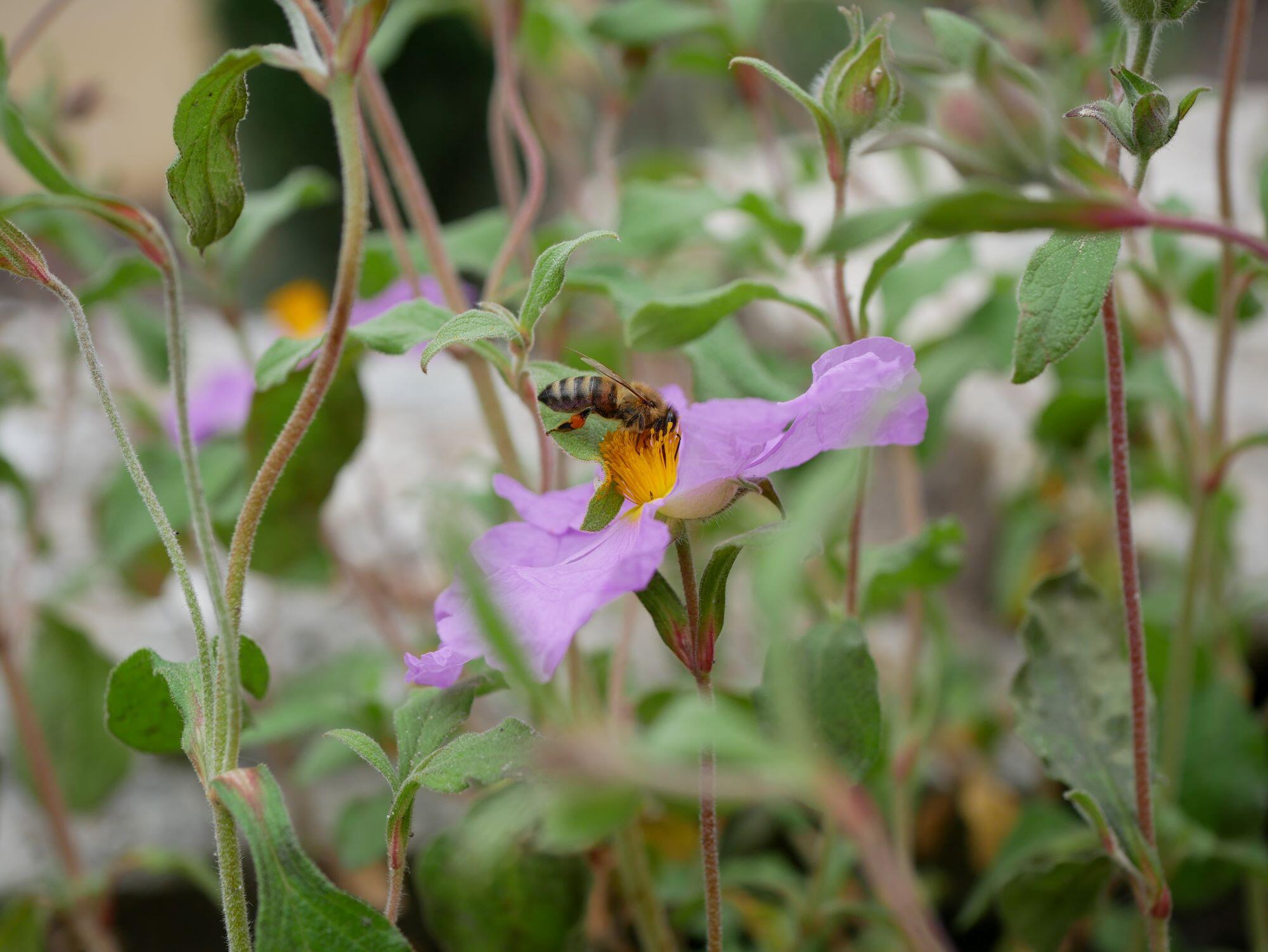
The Mediterranean garden contains a scientific collection of sunflowers.
A walk alongside a medieval city wall
The new garden section is accessible via a new sunken walkway that runs under the Observatory bridge. Previously, visitors had to make a U-turn at the bridge, but now it is possible to walk all the way around the Hortus. While working on the bridge and the Mediterranean Garden, the Hortus came across medieval remains of the Leiden city wall and a tower. These have been archaeologically examined and restored, and can be seen along the sunken path.

Collaboration between Hortus and Leiden Observatory
The Mediterranean garden is located on the sunny south side of the Old Observatory, whose architectural style provided an additional argument for choosing precisely this botanical theme. A garden with an Asian theme would be totally out of place on this site, said Rogier van Vugt.
Since March this year, the exhibition 'The Pentagonal Universe by Gerard Caris' has been on display in the Visitor Centre of the Old Observatory, marking the beginning of a new collaboration, including in the form of an accompanying walking route in the garden. Prefect Paul Keßler and scientific director Ignas Snellen from the Leiden Observatory signed a Memorandum of Cooperation that aims to reinforce this collaboration at the interface of art, nature and science.
Photos: Monique Shaw
Text: Emma Knapper
